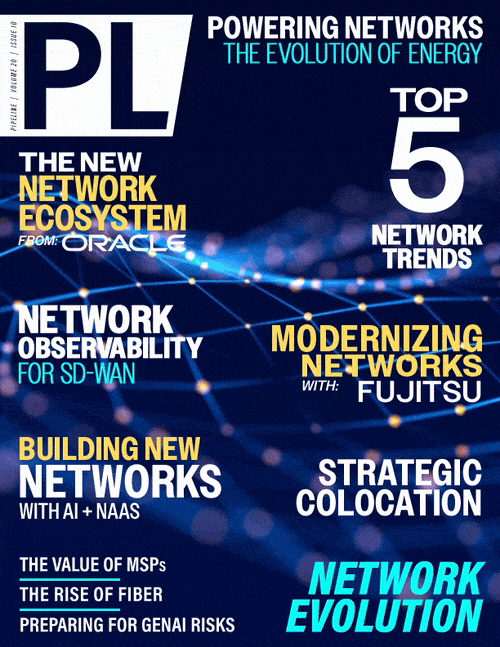More Than a Platform: NaaS, Networking and a
New Era of Consultancy in Interconnectivity
By: Mark Daley

In today’s rapidly evolving digital landscape, Network as a Service (NaaS) has emerged as a key component of digital infrastructure for enterprises. This market is predicted to grow from $14.46 billion in 2024 to $78.38 billion in 2029, with a CAGR of more than 32 percent according to Mordor Intelligence. As businesses shift towards cloud-based operations, the demand for robust, flexible and scalable networking solutions has never been greater. NaaS provides a pathway to achieving these goals, but navigating this journey requires more than just a technological shift. It demands expert guidance and consultancy.
Enterprises now face numerous networking challenges critical to their success. From managing the proliferation of cloud services and IoT devices to supporting a growing remote workforce, the need for reliable and efficient networking is paramount. However, many organizations lack the in-house expertise necessary to effectively manage and optimize their networking or may simply be unaware of the latest networking options available to them.
This is where an expert networking partner comes into play. As the networking landscape continues to evolve, the role of consultancy and professional services becomes even more crucial in this new era of interconnectivity. These partners offer comprehensive guidance, providing advice, insights, and practical recommendations to maximize the value and performance of their network. By aligning networking solutions such as NaaS with business objectives, they help enterprises ensure their network is an enabler for business success and customer satisfaction.
Enterprise Networking Hurdles
The fast-paced and demanding nature of today’s business landscape can put unnecessary strain onto both IT and networking enterprise teams. Four common challenge areas are:
Network Complexity: As enterprise networks grow in size and sophistication, managing multiple devices, configurations, and network policies becomes increasingly challenging. This complexity often requires advanced network management tools and more skilled personnel to ensure optimal performance and security.
Security Vulnerabilities: Complex networks have more potential entry points for cyber threats. Ensuring comprehensive security across a dispersed and intricate network structure demands constant vigilance, sophisticated security measures, and timely updates.
Scalability & High Cost: As enterprise networks get more complex, scaling them to meet growing demands becomes more difficult, and expensive. This is particularly prominent with rigid, legacy systems.
Skills Gap: There is a significant skills gap in the enterprise IT industry, with a shortage of professionals who can design, implement, and manage complex networks. Keeping existing staff up to date with the latest networking technologies and practices requires continuous training and development, which can be resource-intensive and time-consuming.
Connectivity, Consultancy, and Expert Communication
Partnering with an expert NaaS provider can bridge internal network technology and skills gaps and offer an array of connectivity solutions for their network to thrive:
Expertise & Advanced Skills: Partnering with a NaaS provider gives enterprises access to highly specialized and experienced professionals with the latest knowledge and skills in network management, design, and security. These providers invest in continuous training and certification for their staff, ensuring they are always up to date with the latest networking technologies and best practices. This expertise can be valuable to enterprises that are open to combining their internal teams with expert external NaaS teams, for a comprehensive approach to network management.
Cost Efficiency: By leveraging a NaaS provider, enterprises can avoid the substantial upfront costs associated with purchasing and maintaining network infrastructure by opting for a subscription-based model instead. NaaS providers offer flexible pricing models that allow enterprises to scale their network services according to demand, ensuring cost efficiency and budget predictability.
Network Performance & Reliability: NaaS providers use advanced technologies and best practices to optimize network performance, ensuring high-speed, low-latency connectivity that meets the demands of modern enterprise applications. With robust infrastructure and redundant systems, NaaS providers also ensure high availability and



















